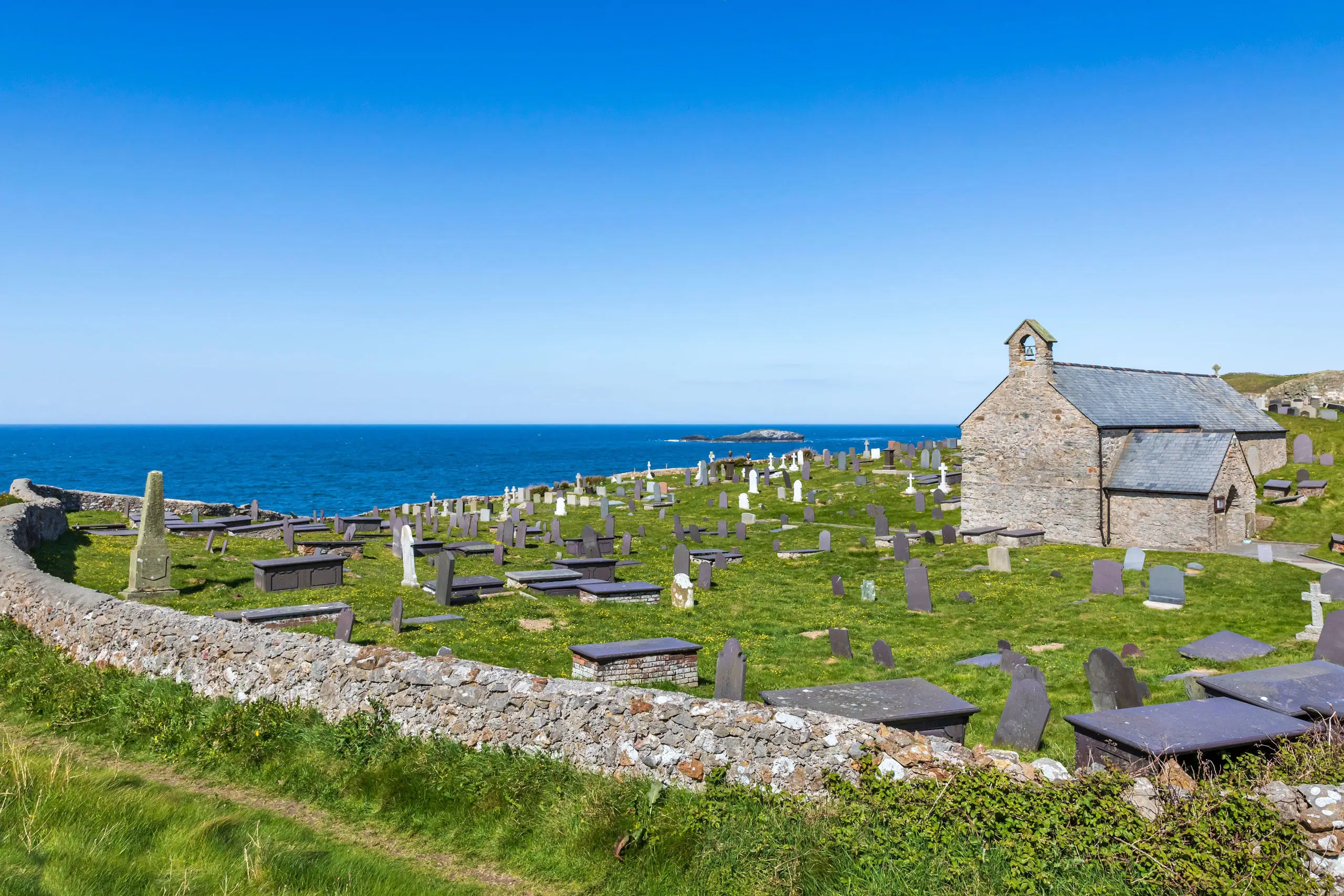
Northern exposure
You’ll be following in the footsteps of saints on this tour, which includes a coastal walk that’s guaranteed to cause your spirits to soar.

Llanbadrig Church is a place of great spirituality. If you know or understand a little Welsh you’ll be aware that it owes its name to a venerated visitor, St Patrick, patron saint of Ireland (‘llan’ meaning church, ‘badrig’ referring to Patrick).
According to legend, Patrick was shipwrecked here in AD440, surviving in a cave with its own freshwater spring before founding the church to express his gratitude. It’s the oldest place of Christian worship in Wales, beginning life as a wooden structure before being rebuilt in stone in the 14th century. The story doesn’t end there. Unusually, a 19th century restoration incorporated Islamic-influenced designs.
Standing above the sea in one of Anglesey’s most scenic spots (and that’s saying something), this small church exudes saintliness and contemplation. One famous visitor, the Dalai Lama, said it was ‘the most peaceful spot on Earth’. Look across to Ynys Badrig (another Welsh lesson: ‘ynys’ meaning island) where Patrick was reputedly shipwrecked, and you feel a connection with land, sea and the passing of time that’s almost palpable.
To get to the church leave Cemaes heading eastwards on the A5025, shortly turning first left on a minor road that takes you within a mile to a small car park on your left.
After visiting the church follow the Anglesey Coastal Path eastwards – it’s a particularly spectacular stretch – and walk to Dinas Gynfor, the island’s northernmost point crowned by an Iron Age promontory fort (it’s 3 miles/4.8km there and back, a leisurely walk of one and a half to two hours).
Rejoin the A5025 via Amlwch and Llanallgo for the beach of Traeth Bychan, just off the A road a mile south of Moelfre.

Lunch: Traeth Bychan Beach Shop and Café, for baguettes, baps and wood-fired pizzas.
Return to the A5025 and retrace your steps to Llanallgo, home to two interesting religious sites. First, visit St Gallo’s Church (there’s a small amount of local parking) which occupies one of the oldest Christian sites in Anglesey. Gallo established a cell here in the 6th century that later developed into a medieval church (the oldest part of the current building dates from the 15th century).
But the church is now remembered primarily for its association with the shipwreck of the Royal Charter in 1859 off Moelfre, which claimed over 400 lives. Many of the victims are buried in the churchyard where gravestones record the names and lives of those lost at sea.
Charles Dickens, who was inspired by the humanitarian efforts of the local rector, wrote about the maritime disaster in The Uncommercial Traveller and initiated a public subscription for the monument in the church grounds. There’s also a newer memorial featuring an anchor salvaged from the wreck.
From here walk about a quarter mile/400m south-west to Ffynnon Allgo, St Gallo’s Well. This holy well with reputed healing qualities, measuring 1.8m by 0.9m and surrounded by ancient stonework, lies somewhat incongruously within a caravan park.